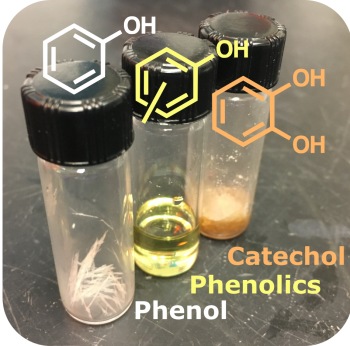
Author: Zia Abdullah, Laboratory Program Manager, National Renewable Energy Laboratory
Read Zia's bio ►
Meet the other bloggers ►
Return to Bioprose blog ►
Bioprose Blog
Thermochemical conversion of lignocellulosic biomass is a promising route to produce renewable biofuels and oxygenated biochemicals while enabling the reuse, recovery, and recycling of materials containing carbon.
Aqueous Waste Streams: A Drag on Biorefinery Profitability

To convert biomass into renewable biofuels and biochemicals, biorefiners must first break down biomass (deconstructed) into smaller subunits. When this deconstruction is performed through thermochemical processing, an aqueous waste stream is often generated in addition to the valuable product.
These aqueous waste streams are predominantly water, but also contain organic compounds like acids and phenolics. Thus, these streams cannot be discharged directly to the sewer and therefore create additional wastewater treatment costs for the biorefinery.
Even though these waste streams contain useful organic materials, they still cannot be efficiently converted to biofuels or biochemicals because they are dilute, making up less than 3% of the waste streams’ composition, and are therefore difficult to separate.
In addition, it is generally not cost-effective to isolate the most valuable components from these organic materials due to the high-purity requirements typically necessary for bulk chemical production.
In response to this costly issue, National Renewable Energy Laboratory (NREL) research engineer Nolan Wilson, group manager Mark Nimlos, and research technician Joseph Roback, with funding support from the Bioenergy Technologies Office, developed a method to enhance the value of aqueous waste streams by isolating these organic compounds, specifically the monomers, which are precursors to everyday materials like plastics.
This detailed method was published in the journal Green Chemistry in a study titled, "Valorization of Aqueous Waste Streams from Thermochemical Biorefineries."

The NREL Solution: Isolation of Bio-Based Monomers from Aqueous Waste Streams
The NREL team addressed the thermochemical conversion strategy of catalytic fast pyrolysis, which deconstructs biomass in the absence of oxygen and catalytically upgrades the resulting vapors to produce an oil and aqueous product stream.
The team developed a process to isolate two lignocellulosic biomass-derived monomers from this aqueous stream—phenol and catechol. Phenols are primarily used in polycarbonate and phenol-formaldehyde resins, which have use in automotive, aerospace, building material, electronic, and consumer goods applications. Catechol can be found in insecticides, perfumes, and pharmaceuticals.
The NREL team successfully separated phenol and catechol to 97 wt% purity using the industrially relevant techniques of liquid–liquid extraction, distillation, and recrystallization. Monomers with high purity are necessary because they serve as feedstocks for the chemical manufacturing industry, which must meet strict quality targets for consumer products.
NREL's techno-economic analysis team also demonstrated that a mixed-phenolics stream can be produced from the waste at a selling price of approximately $1.06/kg. In comparison, a high-purity phenol has a market price of around $1.10/kg (see diagram below).
Extra Revenue Stream for Existing Biorefineries
Overall, NREL has demonstrated an approach that increases the atom efficiency of thermochemical conversion by increasing the value of the waste stream. The outcome is high-purity oxygenated aromatic compounds that show promise as a means to convert a waste stream into a revenue-generating stream for the biorefinery industry.


